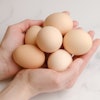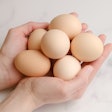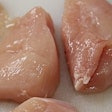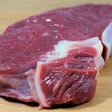
A formula for pigs or poultry is composed of two parts that can be revised to realize potential savings in feed cost. Most nutritionists attempt to achieve savings by altering nutrient composition, but substantial savings can be realized in adjusting ingredients.
1. Energy
Let us begin by examining the ingredients used in a typical formula. Cereals and lipids (oils and fats) invariably provide the majority of energy, and their contribution to total formulation cost is usually the highest. Common cereals like maize and wheat are often considered indispensable, but this is far from truth as under certain conditions alternatives can be used, resulting in significant cost reduction. To this end, ingredients such as tapioca, sorghum, triticale, rice, rye and oats are often priced favorably enough to be used in sufficient amounts to replace all or part of the more common energy sources. These less common cereals are not without their problems and, as such, care must be taken when used in excessive amounts. Table 1 presents the most common anti-nutritional factors in cereals. Of course, cereal byproducts, and other energy-rich feedstuffs, are also useful in replacing common cereals, and examples include wheat byproducts, distiller’s grains, full-fat soybeans, tapioca and even citrus pulp.
2. Protein
Ingredients that supply protein make the second most expensive contribution to feed cost. Here, the situation is more difficult as alternative ingredients less readily available, but not impossible to find. Experience has demonstrated that the best way to address this issue is by the use of crystalline (synthetic) amino acids. This is not an easy path to follow, however, as there is a limit beyond which performance drops drastically. The most common suggestion is to set an upper limit of synthetic lysine (pigs) or methionine (poultry). As these amino acids are, respectively, the first limiting amino acid, other synthetic amino acids will almost always be used at levels below this threshold. In some formulas, some buffering should be considered to counteract the acidic environment created by a high inclusion level of certain amino acids.
3. Minerals
Next is phosphorus, the third most expensive contribution to overall feed cost. In this case, the use of phytase is recommended when prices of inorganic phosphorus salts are too high. In some cases, phytase should be used even in double doses to further reduce cost and inclusion of inorganic phosphorus. Most likely, the cost of calcium and sodium sources is always quite low, and, as such, these ingredients do not merit much attention for our purposes. Nevertheless, some commercial products (such as premixes and concentrates) are fortified with elevated concentrations of calcium carbonate and salt as a way of reducing their cost.
4. Premixes
Then, we come to the vitamin and trace mineral premixes. Here there is tremendous variation in quality and prices in the market. First, there are products that are cheap enough but in return they do not provide enough nutrients for adequate animal performance. In most cases, however, premixes are over-fortified with vitamins and trace minerals resulting in wasting of nutrients. Reducing the inclusion level of a premix is quite often an easy solution, but this should not be done without consulting a qualified nutritionist.
5. Additives
Finally, we must examine all additives that are so often added in most diets without much consideration to their real effectiveness and return on investment. It is not uncommon for many formulas to contain up to ten additives that provide only marginal (if any) benefit. Such additives should be examined very thoroughly based on published scientific evidence.
Real case scenario
In closing this discussion, a real case is offered for consideration. One of my clients asked me to review his formulas. Finding the nutrient specifications well set for his farm and genetics, we then moved to ingredients being used. In a wheat-maize nutrition program, we introduced a third cereal in the feeds (sorghum); we increased the level of synthetic amino acids and removed some of the protein sources used; we doubled the dose of phytase and almost eliminated phosphate salts; we reduced the inclusion of the vitamin premix (but not that of the trace minerals); and finally we removed one of the three additives used (not needed any longer as the problem for which it had been added was already resolved).
After five months of observation, animal performance was not affected, carcass quality was maintained and animal health remained constant. In round numbers, feed cost was reduced by 5 euros per metric tonne, resulting in 50,000 euros per year savings.


















